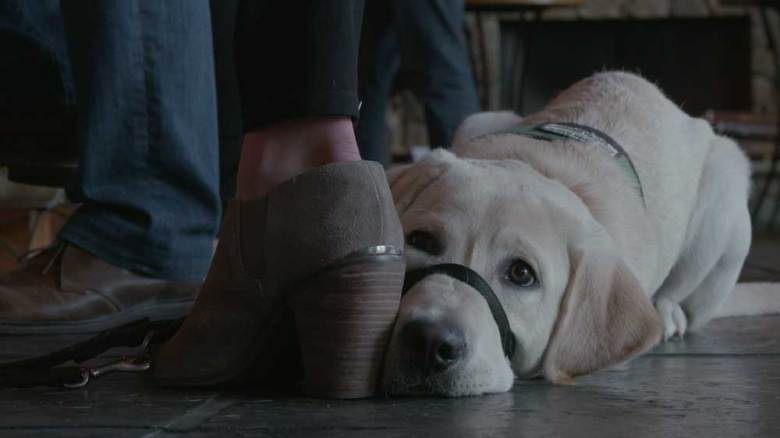
PICK OF THE LITTER
KTF Films
Reviewed by: Harvey Karten
Director: Don Hardy, Dana Nachman
Screenwriter: Dana Nachman
Cast: Ron, Janet: Patriot, Phil, Potomac, Poppet, Primrose
Screened at: Critics’ link, NYC, 1/16/18
Opens: June 12, 2018 at Slamdance
The United States gets along with many countries, though admittedly fewer now than before January 2017. But if there’s one aspect of American culture that puts us squarely against most nations of the Middle East and a few in the Far East, it’s our love of dogs. Some societies use them for food, and others think simply that they’re dirty. But with in estimated 40% of American homes where dogs have become parts of families, the U.S. may be statistically ahead of all others. America first!
It’s not enough that dogs fill the hearts of the good people who share their homes with them. They are called upon by police to search for drugs and weapons. Perhaps most of all they serve a purpose above and beyond eliciting the love of people, and that’s to guide the blind.
Don Hardy and Dana Nachman, who spent over two years directing “Pick of the Litter,” succeed beautifully in capturing key moments; those times when Labrador Retrievers are officially handed over to people who are either totally without sight or without peripheral vision. At the same time that these fantastic animals change hands, there is heartbreak in the homes of people who have raised them since puppyhood, understanding that they must fulfill their part of the bargain in losing them. At the same time they feel gratification that largely as a result of the training they give to the seeing-eye dogs, the animals are going to be indispensable to up to 1100 sight-disabled people who apply annually to the organization for them.
This is not a simple procedure. There’s a reason that the movie is called “Pick of the Litter,” because these dogs have to pass a battery of tests in order to participate in graduation ceremonies, where the humans who need them give speeches and the Retrievers, who may not know what applause is for, will content themselves with treats.
Hardy, who co-wrote the script with Dana Nachman, serves also as the film’s editor and director of photography. His skill in choosing the right scenes to photograph and in putting the show together in an understandable order is without question superb. Some of the shots that will evoke the “aw” factor from viewers include the only moving photo I’ve seen of a dog actually giving birth. When the human being in charge of helping a Retriever shed, in this case, five puppies, you may get the impression that the dog is laying an egg. That’s how small the newborns are, and their miniature size explain just how a mature dog is able to keep the litter within until the time comes to relieve herself of them. A pup can fit in the palm of the hand.
After several months when the Retrievers are kept behind gates in spotlessly clean surroundings, they are handed out to volunteers who raise them—the folks who give of their time partly because they have a good heart to helping the blind, and partly because they love the animals they raise and train. Before a dog is ready for a final test, the volunteer raisers answer questions, such as whether they spotted too much lunging, whether they show fear of shyness, and whether they can heel, sit, stay, lie down. A veterinarian will inspect the ears, eyes, and take imaging, but simply passing the physical test is a piece of dog treat compared to the obedience demands later.
Dogs must prove especially that they can ignore orders from the blind human beings when the order runs counter to the safety of the pair, such as when a car may be leaving the driveway or when there are no sidewalks in the neighborhood.
Unhappily, many dogs fail, even after retests; I believe out of the stars focused on here—Primrose, Poppet, Potomac, Phil and Patriot, only one or two make the cut. Phil is judged to be perfect. Those who fail are either returned to the raisers or serve in another capacity such as animals for diabetics of veterans with PTSD.
It’s a pleasure to witness ecstasy when a dog is handed over to a blind person. Ron, for example, a man who lost sight in both his eyes from a genetic disease that skips some generations, reports having butterflies, as nervous as he would be when meeting a blind date.
I would like to know what happens to dogs when because of age, they are no longer able to service their people. Is there a sanctuary available? Do they go back to the building that houses them? All in all, America’s Best Friend is given the equivalent of a 21-gun salute by this well-crafted documentary.
Unrated. 81 minutes. © 2018 by Harvey Karten, Member, New York Film Critics Online
Story – A-
Acting – A-
Technical – A-
Overall – A-





